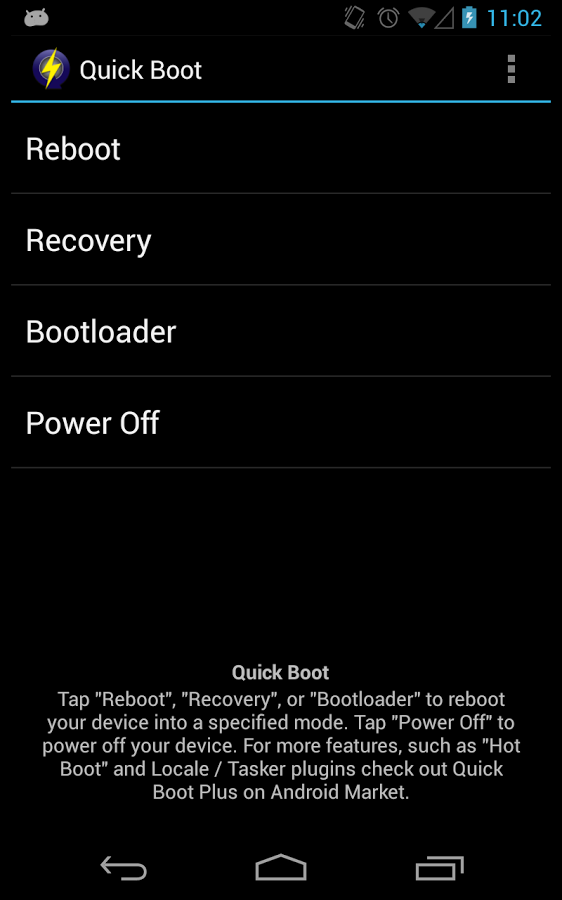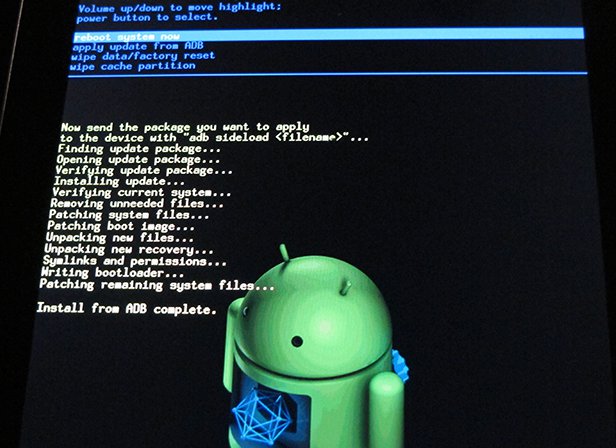
- #Adb quickboot how to
- #Adb quickboot license key
- #Adb quickboot zip file
- #Adb quickboot android
- #Adb quickboot software
Some of the benefits of using ADB FASTBOOT(MTK TOOL) Keygen are: What are the Benefits of Using ADB FASTBOOT(MTK TOOL) Keygen? Once done, you can use the FAP tool to bypass FRP lock, unlock bootloader, or flash custom ROMs on your Vivo phone. Select your phone model and choose the FAP tool option from the program.įollow the instructions on the screen to flash the FAP tool on your phone.
#Adb quickboot license key
Paste the license key when prompted and click on Activate button.Ĭonnect your Vivo phone to your PC via USB cable and enable USB debugging mode on your phone.
#Adb quickboot zip file
To use ADB FASTBOOT(MTK TOOL) Keygen, you need to follow these steps:ĭownload the ADB FASTBOOT(MTK TOOL) Keygen from this link.Įxtract the zip file and run the keygen.exe file.Ĭlick on Generate button and copy the license key.ĭownload the ADB FASTBOOT(MTK TOOL) program from this link.Įxtract the zip file and run the adb_fastboot_mtk_tool.exe file.
#Adb quickboot how to
How to Use ADB FASTBOOT(MTK TOOL) Keygen? However, the ADB FASTBOOT(MTK TOOL) program requires a license key to work, and that's where the keygen comes in handy.

The FAP tool is a tool that can help you bypass the FRP lock, unlock the bootloader, and flash custom ROMs on your Vivo phone. This program is a tool that can help you flash the Vivo factory reset tool FAP tool on your Vivo phone.
#Adb quickboot software
In this article, we will show you how to use this tool and what are its benefits.ĪDB FASTBOOT(MTK TOOL) Keygen is a software that can generate a license key for the ADB FASTBOOT(MTK TOOL) program. This is a tool that can help you flash the Vivo factory reset tool FAP tool without using any risky methods. If you are looking for a way to unlock your Vivo phone without losing any data, you might be interested in ADB FASTBOOT(MTK TOOL) Keygen. How to Use ADB FASTBOOT(MTK TOOL) Keygen to Unlock Your Vivo Phone You can flash a device when it's in the fastboot bootloader mode.ADB FASTBOOT(MTK TOOL) Keygen ((INSTALL))
#Adb quickboot android
Not all Android devices have fastboot enabled.Īndroid device manufacturers are allowed to choose if they want to implement fastboot or some other protocol. Fastboot does not require USB debugging to be enabled on the device. Fastboot allows to boot from a custom recovery image. If the mode is enabled, it will accept a specific set of commands sent to it via USB using a command line. It requires that the device be started in Fastboot mode. It is included with the Android SDK package used primarily to modify the flash filesystem via a USB connection from a host computer.

It is implemented in a command-line interface tool of the same name and as a mode of the bootloader of Android devices. Communication with a device is done with a Transport.įastboot is a communication protocol used primarily with Android devices. On the other side, the Server continuously monitors for connecting Daemons (as USB devices or TCP emulator). On one side the Server exposes a “Smart Socket” to Clients such as adb or DDMLIB. The central part is the Server which runs on the Host computer. Three components of adb pipeline: As outlined in the overview, this codebase generates three components (Client, Server (a.k.a Host), and Daemon (a.k.a adbd)). this makes distribution and starting the server easier.ģ. Currently, a single 'adb' binary is used for both the server and client. Then, the client sends its service requests to the ADB server. It first tries to locate the ADB server on the host machine, and will start one automatically if none is found. ADB command-line client: The 'adb' command-line program is used to run adb commands from a shell or a script. The BOOTLOADER and RECOVERY states correspond to alternate states of devices when they are in the bootloader or recovery mode.ģ. Otherwise, the device is OFFLINE, meaning that the ADB server detected a new device/emulator, but could not connect to the adbd daemon. The ADB server considers that a device is ONLINE when it has successfully connected to the adbd program within it. Its purpose is to connect to the ADB server (through USB for devices, through TCP for emulators) and provide a few services for clients that run on the host. ADB daemon (adbd): The 'adbd' program runs as a background process within an Android device or emulated system.

The ADB server is really one giant multiplexing loop whose purpose is to orchestrate the exchange of data (packets, really) between clients, services and devices.Ģ. It thus maintains a list of "connected devices" and assigns a 'state' to each one of them: OFFLINE, BOOTLOADER, RECOVERY or ONLINE. Its purpose is to sense the USB ports to know when devices are attached/removed, as well as when emulator instances start/stop. ADB server : This is a background process that runs on the host machine.



 0 kommentar(er)
0 kommentar(er)
